Outdoor Gardens,
Lobby + Gift Shop
April - September
10 am – 6 pm daily
October - March
10 am – 4 pm daily
Bolz Conservatory
Closed March 11 - June 14 for Planned Maintenance
Schumacher Library
Permanently Closed
April - September
10 am – 6 pm daily
October - March
10 am – 4 pm daily
Closed March 11 - June 14 for Planned Maintenance
Permanently Closed
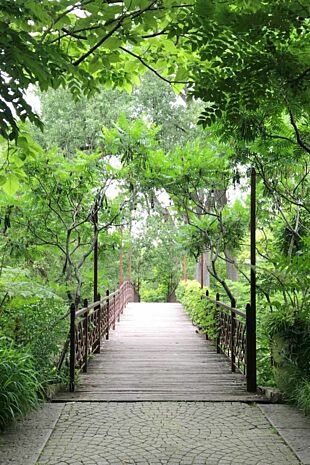
Plants are great, but it's the people that make our garden special.
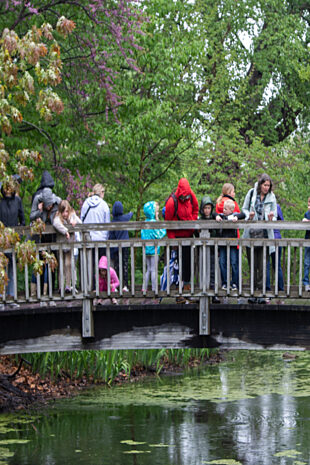
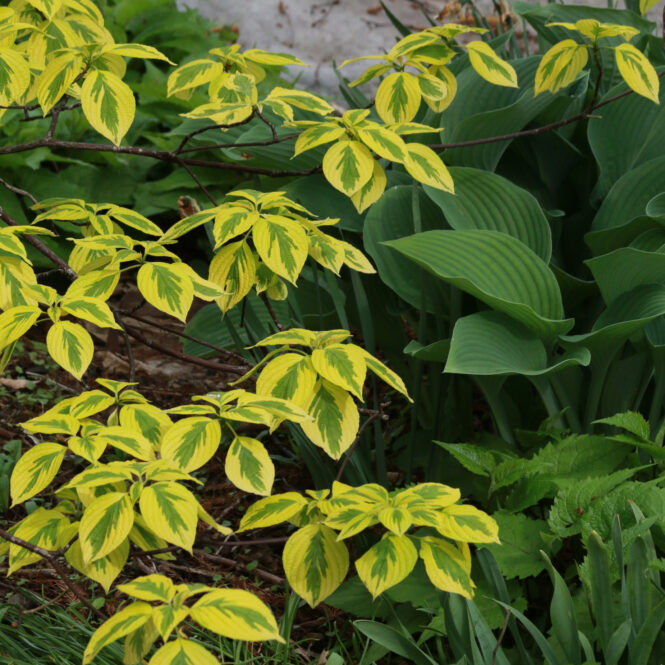
After the gray days of winter, spring flowers lift our spirits.
Bulbs lead the way, but remember: Flowering trees are just as
important to the spring landscape. Most people are familiar
with crabapples, cherries, and magnolias. Of course they’re
undeniably spectacular in the spring, but these common species
aren’t the only trees that flower early in the season. Here are
other spring-flowering trees that deserve attention.
Hamamelis vernalis is an early flowering species, which nearly
blooms in winter. Its flowers open all along the branches and are
quite fragrant. Among the cultivars growing at Olbrich Gardens are
‘Harvest Gold,’ with brilliant fall color before orange spring blooms,
and ‘Kohankie Red,’ with red flowers and a strong fragrance.
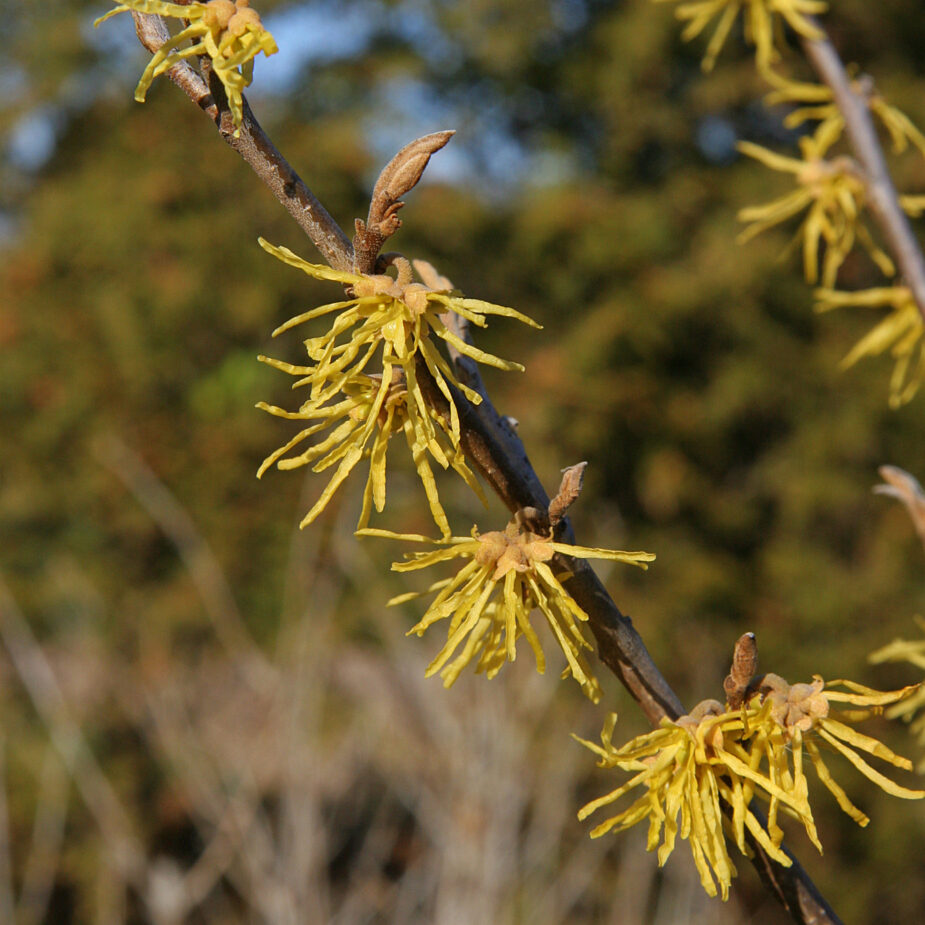
Cornus mas ‘Golden Glory’ is commonly known as cornelian
cherry dogwood. Its bright, yellow flowers open in March, before
the leaves emerge. This small tree grows to 15-20 feet, and has
few disease or insect problems. ‘Golden Glory’ is more erect and
vigorous than the straight species. Bright red fruits that ripen in
fall are edible, though very sour, right from the tree.
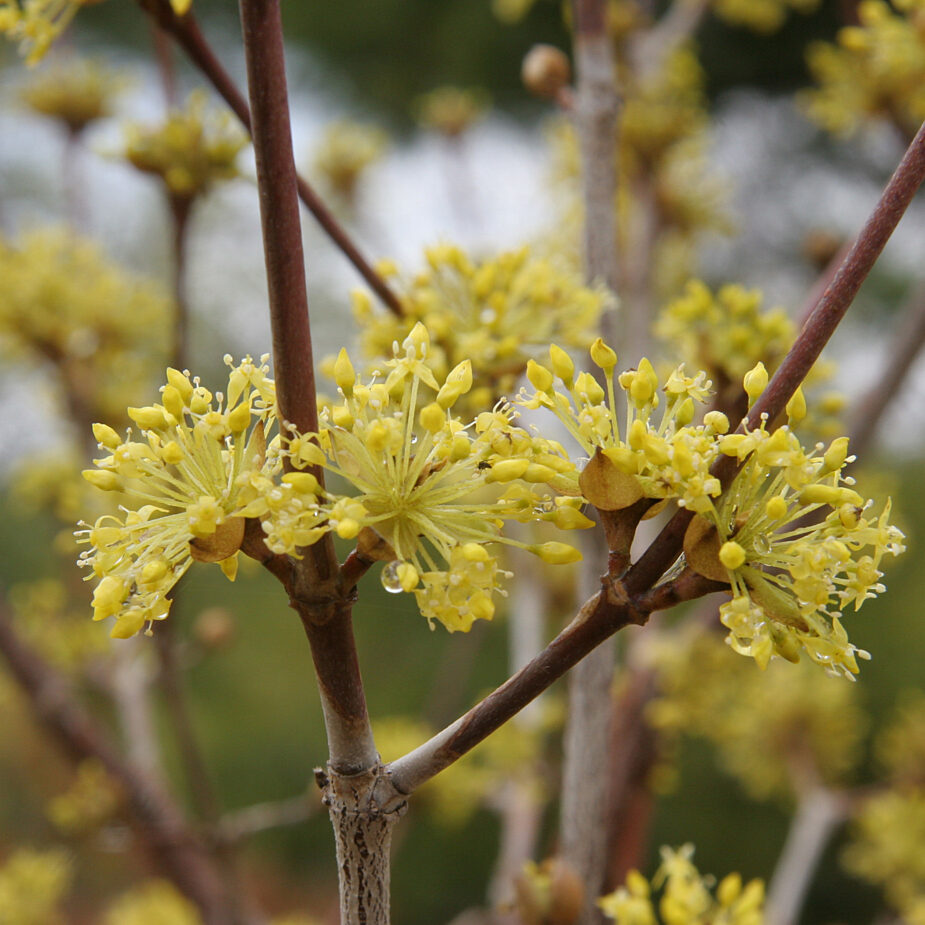
Cornus alternifolia, commonly known as pagoda dogwood,
is native to Wisconsin. Usually grown for the distinctive
architecture of its branches, the tree has naturally forming
horizontal layers, with just the tips of the branches turned
upward. Flowers borne in late spring are bright spots in part
shade – where pagoda dogwood thrives. The flowers emerge
yellowish white, and over the season turn to red-stemmed,
blue-black berries that are irresistible to birds.
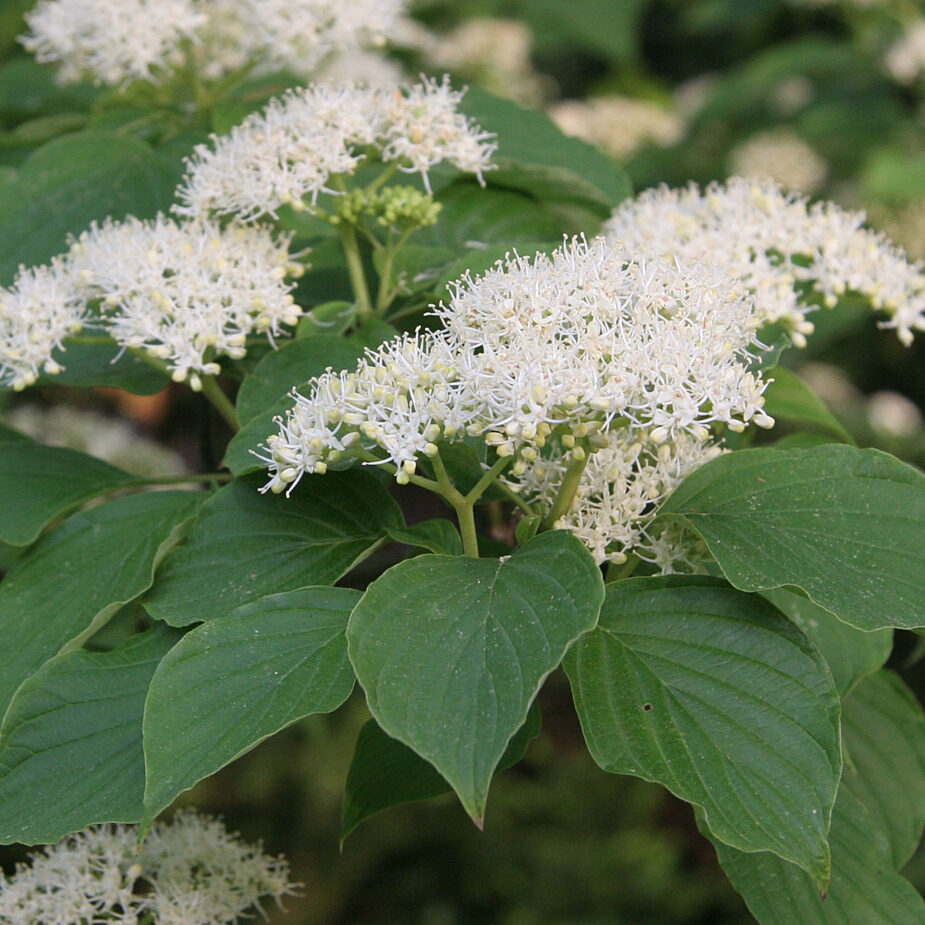
Halesia is a small genus of trees known as silverbells. Olbrich
Gardens has specimens of two species: H. carolina (Carolina
silverbell) and H. monticola (mountain silverbell), both of which
flower in April and May. The flowers grow in clusters of delicate,
white, bell-shaped blossoms, which hang down from the branches.
The fall fruits form interesting winged seed capsules. The trees
grow to about 20-30 feet, and are largely pest- and disease-free.
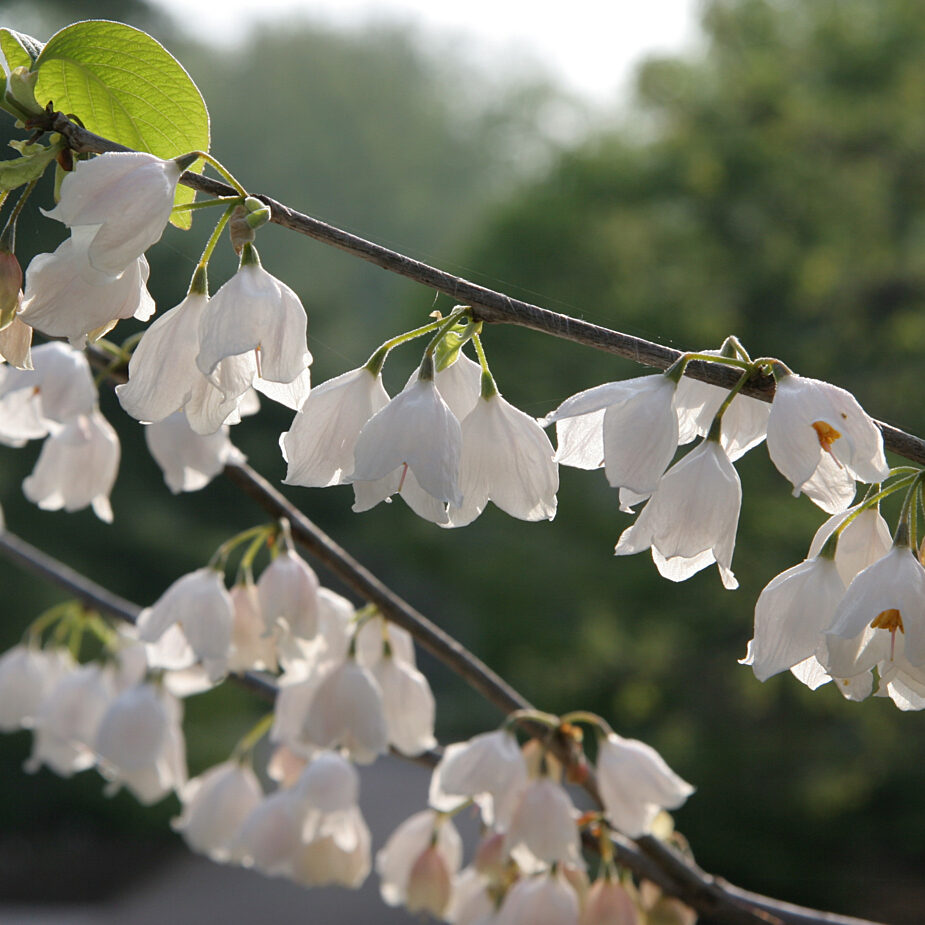
Catalpa speciosa is a large tree native to Southern Illinois. It
sometimes has a bad reputation as messy, but the spring flowers
that cover the tree in late May are worth the trouble – the white,
orchid-like flowers perfume the air down the block. They grow
quickly to shade-tree stature, with large, heart-shaped tropical-looking
leaves. C. speciosa is sometimes known as cigar tree or
Indian bean, for the long, thin seed pods present through autumn.
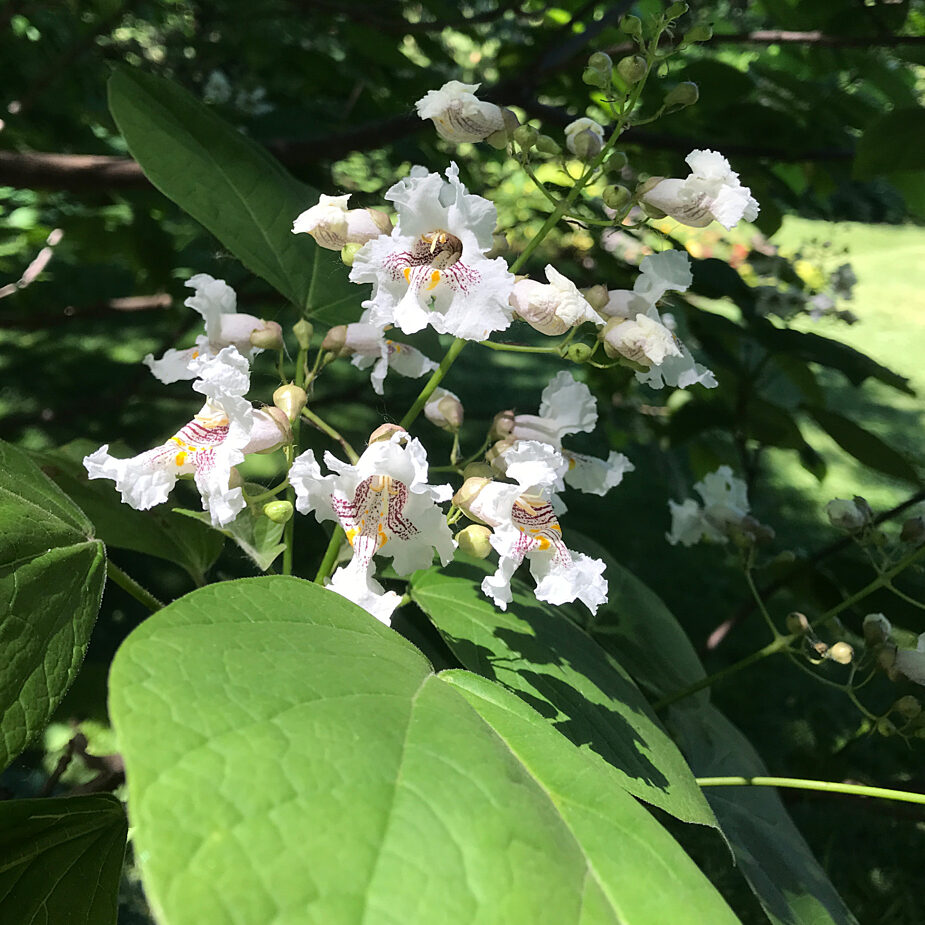
Catalpa speciosa is a large tree native to Southern Illinois. It
sometimes has a bad reputation as messy, but the spring flowers
that cover the tree in late May are worth the trouble – the white,
orchid-like flowers perfume the air down the block. They grow
quickly to shade-tree stature, with large, heart-shaped tropical-looking
leaves. C. speciosa is sometimes known as cigar tree or
Indian bean, for the long, thin seed pods present through autumn.
Some of these trees may be difficult to find for purchase, but
they’re worth the effort. Species diversity benefits your garden,
and native plants have fewer pest and disease problems. The
flowers on these trees may be more subtle than crabapples and
magnolias, but including them will make your garden richer.
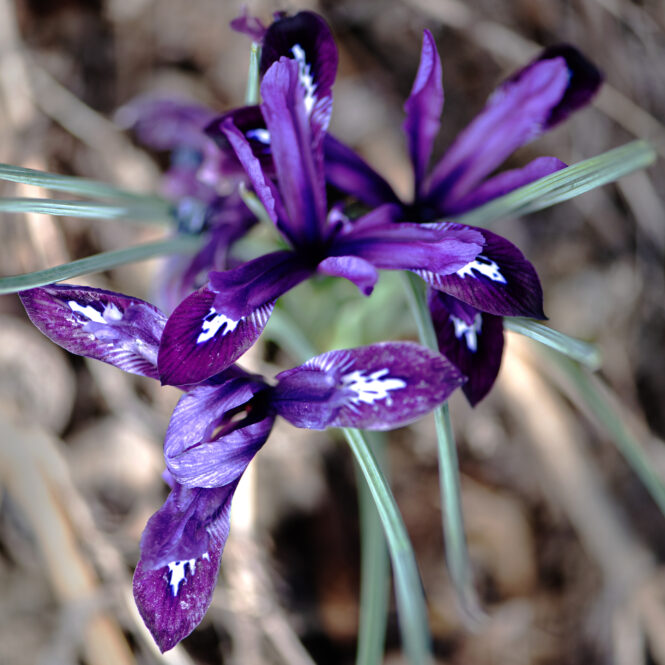
Spring in Wisconsin may not be for everyone, but we’re working on gaining converts. Check out our Top 5 insider tips on how to learn to love spring in the gardens.
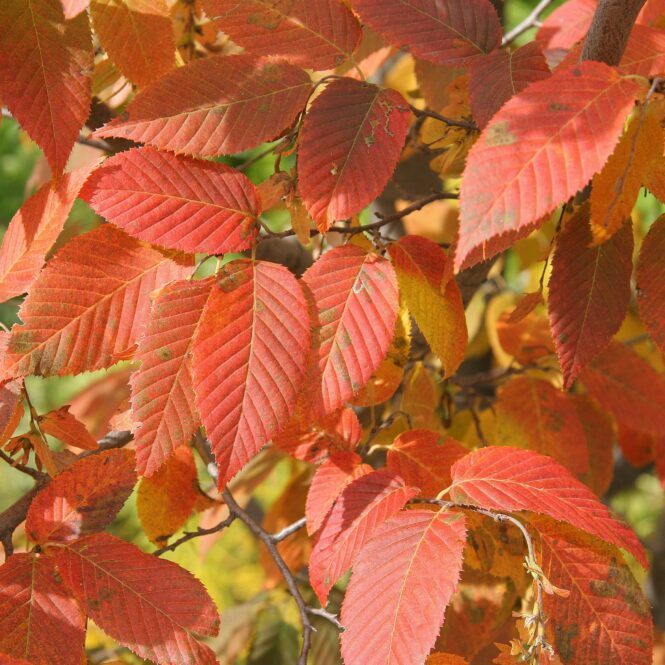
This small, native, understory tree can be found naturally in moist, deciduous woods. It has an attractive, rounded form and could be planted as a specimen tree for shady sites in a landscape.
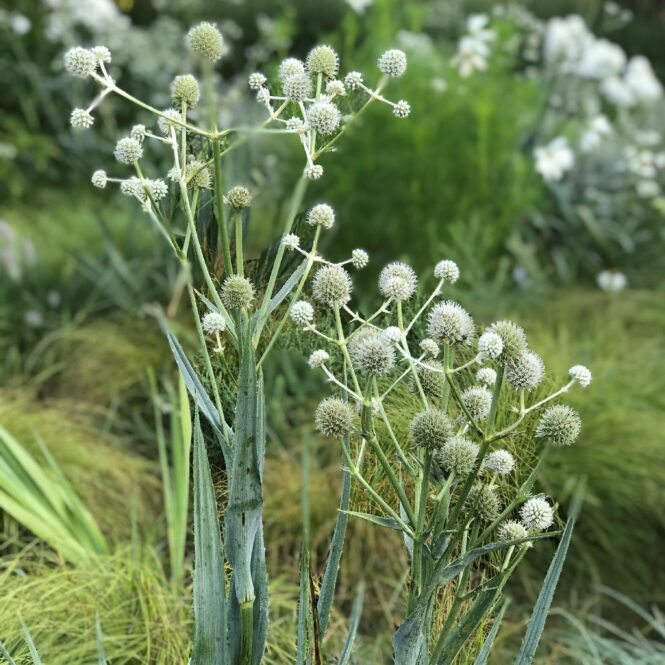
Rattlesnake Master - Its name might sway you to think of cowboys, tumbleweeds, and the wild West. However, it is a true Midwestern native with its roots deeply planted in Wisconsin soil.